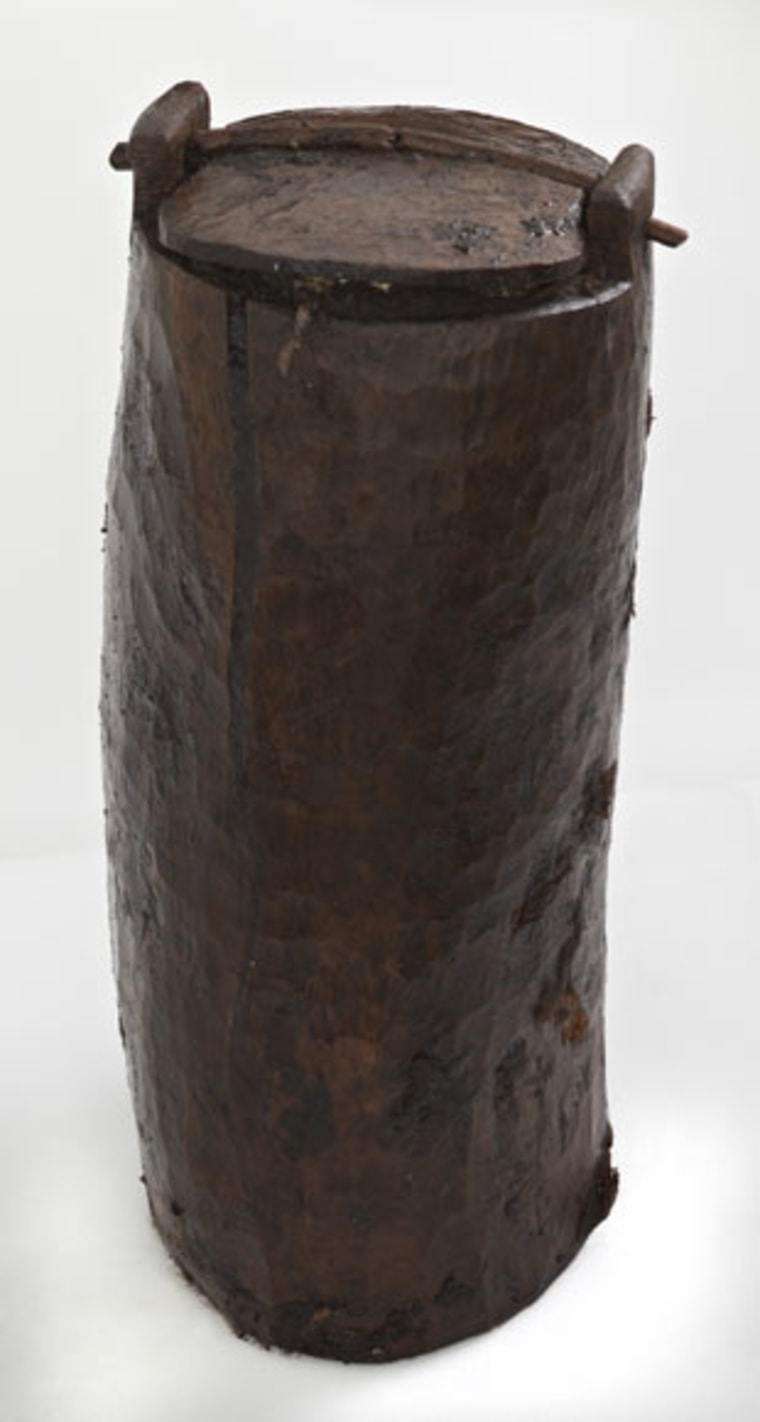Irish workers have discovered one of the earliest examples of packaged and preserved food.
An oak barrel dating back to about 3,000 years ago has been found filled with exceptionally well-preserved butter.
Cut out of a trunk, the three-foot-long, almost one-foot-wide butter barrel weighs 77 pounds and comes complete with a lid.
The butter was found by peat workers John Fitzharris and Martin Lane, who spotted it as they harrowed the Gilltown bog in County Kildare, Ireland.
"We knelt down and felt something hard and started to dig it out with out bare hands. We could smell it, and it was attracting crows," Fitzharris told local reporters.
Now housed at the conservation department of the National Museum of Ireland, the barrel and its buttery contents are being cleaned and analyzed.
The aim is to "conserve both the vessel and the butter. It is hoped that through further tests the species of the wood will be identified and the vessel dated through radiocarbon dating," the museum said in a statement.
The newly found barrel is typologically similar to a number of vessels already in the museum's collection, which have been dated to the Iron Age 500 B.C. — 500 A.D.
Split along the middle due to the expansion of butter over time, the barrel features tool marks from a knife, chisel, adze or axe.
Inside, the butter has turned white and is now adipocere, a kind of wax.
"It's rare to find such a well preserved butter barrel, with the lid intact and attached. It is an invaluable addition to the national collection," Padraig Clancy, assistant keeper at the National Museum of Ireland, told Discovery News.
According to Clancy, it is likely that the butter was put in the bog for practical reasons, rather than ritual. Probably, it was the stored harvest of an Iron Age community, who used the bog as a primitive kind of fridge.
Indeed, burying food — and many other things — in peat bogs wasn't an unusual practice.
Some 270 packages of butter have been retrieved from bogs, along with exceptionally well-preserved wooden objects, swords and ornaments.
The bogs' unique chemistry is what allows these artifacts to endure. The peat-building Sphagnum moss grows over anything tipped into the bog, embedding the buried material in cold, acid- and oxygen-free conditions that immobilize bacteria, preventing decomposition.
This hygienic seal has worked perfectly for the so-called "bog butters," allowing researchers to identify the content of the waxy material. In 2004, analysis by Richard Evershed and his team at the University of Bristol, United Kingdom, confirmed that fat parcels found in bogs were made of butter or lard.
However, some mystery remains. It is not known whether the butter was just buried in the peat with the simple aim of preserving it, or whether the bog served for some primitive food processing, basically to make the butter more tasty.
According to the museum experts, the newly found bog butter has been tasted long before, but there are no plans to do that again.
"It's a national treasure. You can't be going hacking bits of it off for your toast," they told reporters.
